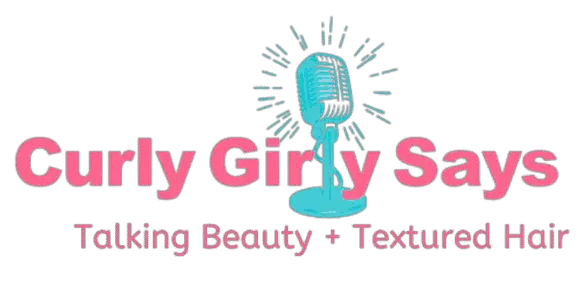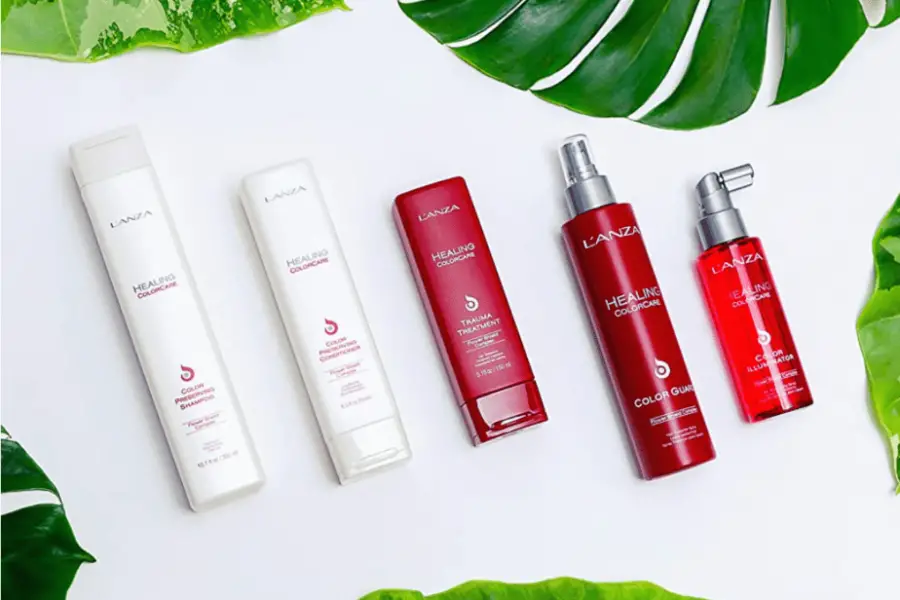Last Updated on April 23, 2025 by Doris Jean
There are so many opinions when it comes to how to properly care for textured hair. Should I only co-wash or should I clarify? Should I use oils and butters or are they a waste of time? The list goes on and on.
I usually go with ‘it depends‘ on most topics and using Sodium C14-16 Olefin Sulfonate is no different!

Some of us may have even sworn off shampoos and opted for alternative cleaning methods, but the fact remains the same: getting rid of the dirt, product buildup, and grime out of our tightly wrung coils is necessary.
Yet most regular cleansing products, i.e. clays, shampoo, conditioners, and the sort, aren’t the best when you need a powerful cleanser.
While these could be a part of your cleansing routine, the typical over-the-counter products don’t do more than moisturize your hair. You may not notice an obvious difference as you come out of the shower with fresh hair, but chances are there are motes of product buildup and other pollutants chafing against your hair follicles, causing an obstruction that will eventually damage all of your strands.
In such cases where you want a more efficacious cleansing product, a surfactant is required. Sodium c14-16 olefin sulfonate may sound very frightening, specifically, since it has the word ‘sulfate’ in it (oh, the horror!), but it’s not what you think it is.
What is Sodium C14-16 Olefin Sulfonate?
Sodium C14-16 olefin sulfonate is a common surfactant. It is NOT a sulfate, although it has sulfur in it. This might sound a bit like AP Chemistry all over again but bear with me.
Surfactants are a chemical compound that removes every speck of dirt, product buildup, and pollutants clinging to your hair. Sulfactants are aslo found in detergents.
When used in a shampoo, these are surface-active agents that emulsify the dirt and oils on your hair and scalp. When you apply a product with a surfactant in it, the chemical will actually dig out the pollutants in your follicles to be washed away easily with water.
Now surfactants can come as different types and not each one will maintain the same purpose. If you’re looking for an adequate cleanser, your best option is to use sodium C14-16 olefin sulfonate, which is an anionic surfactant derived from coconut.
This is more effective at getting rid of the dirt and buildup on your hair.
What is the difference between Sodium C14-16 Olefin Sulfonate and Sulfates?
Simply put, sulfates are harsher than sodium C14-16 olefin sulfonate. Generally speaking, sulfonates are less stripping than lauryl sulfates. Both can be drying and strip your hair but should only be used to get rid of product buildup. Cosmetics and Toiletries does a great job giving a scientific explanation on the differences between the two.
However depending on your day to day hair routine you may need to use a clarifying shampoo to alleviate build up.
If that is the case, look for shampoos with sodium c14-16 olefin sulfonate rather than sulfates. It is a safe and effective surfactant to use when necessary.
Here are some great products that have sodium C14-16 olefin sulfonate in them.
Is Sodium C14-16 Olefin Sulfonate Bad for Hair?
Sodium C14-16 Olefin Sulfonate should only be used on people with EXTREMELY oily hair or have dirt and product build-up.
Most of us have a rather cursory knowledge of chemistry, but we are all gravely aware that sulfates are a big no-no for our hair.
So, isn’t using sodium c14-16 olefin sulfonate hair-suicide?
While sulfate and sodium c14-16 olefin sulfonate both have sulfur in them, there’s a massive difference that separates the two.
Unlike sulfate, sodium c14-16 olefin sulfonate is actually made up of the salts of sulfonic acid. This makes it very different from a sulfate.
But neither of them is totally safe and you will need to use it with caution. Sodium c14-16 olefin sulfonate can be quite effective at stripping away molecules wedged in your hair. It’s definitely not something you should consider in your everyday routine but rather an occasional cleanser for when your hair feels more matted.
Furthermore, if you have frail and damaged hair, you should stay far away from this chemical. Due to it being a powerful detergent, sodium c14-16 olefin sulfonate can strip already damaged hair to an absolute brittle state. You’ll have to take significant curative measures to restore your strands to a healthy texture.
You May Also Like:
Is Sodium C14-16 Olefin Sulfonate Bad for Colored Hair?
Considering how sodium c14-16 olefin sulfonate is a powerful cleansing agent, using this on colored hair is not ideal. Surfactants are typically too harsh for colored hair and using them can cause your hair to lose its color faster.
Any standard shampoo with surfactants in its ingredient list is too dangerous to use on color-treated hair. This is because the detergent properties are able to penetrate deep inside the hair follicle, resulting in swelling and color leaching.
This, however, doesn’t mean that surfactant-free shampoos are great for color-treated hair either. Typically, whenever water enters your hair strands, it will cause a fading of the color.
The only difference between using a surfactant-free shampoo and surfactant shampoo is that the fading process is slower with the former.
If you’re unsure how to cleanse your color-treated hair, my word of advice would be to wait for at least 3 days or 72 hours before you use a shampoo.
The cuticle layer needs to close up properly to avoid stripping agents from penetrating deeply into the color molecule. Once the cuticle has closed up, your color molecules get trapped inside which ensures long-lasting hair color on your beautiful locks.
Is Sodium C14-16 Olefin Sulfonate Safe for Keratin Treatment?
To put it plainly, no it is not safe to use sodium c14-16 olefin sulfonate after a keratin treatment. But you should know the reason why it’s not safe so that you’re aware of the proper after-care after having your hair treated with keratin.
It should be mentioned though that there’s no scientific evidence that clearly verifies whether surfactants cleansers are usable on keratin-straightened hair.
To be actually convinced that there are negative consequences, more research has to be done but for now, we can rely on the recommendations of professional hairstylists.
Generally, hair professionals condemn the use of surfactant shampoos or cleansers after a keratin treatment. There’s a good reason too.
Surfactant shampoos can be seriously stripping for your hair as these are more powerful than a typical surfactant-free shampoo.
Since Sodium C14-15 Olefin Sulfonate is a very potent surfactant that tends to remove any and every molecule trapped in your cuticles, it’s likely that your keratin treatment will be rendered useless if you use a surfactant cleanser.
Furthermore, once your hair is treated with keratin, the hair strands become chemically processed and more vulnerable damage.
The cuticles become more open and a harsh surface agent such as the Sodium C14-16 Olefin Sulfonate can strip away both the chemical and natural molecules in your strands, which includes the proteins you’ve added in with the keratin treatment.
Eventually what you will be left with is a dry and damaged mane. This can exacerbate frizz as well. Your keratin-straightened hair won’t be visible for long either.
Is Sodium C14-16 Olefin Sulfonate Curly Girl Approved?
This is a controversial subject; I won’t deny that. This chemical can be really irritating on your skin if you somehow get it on there, but it can be healthy for your hair under the right circumstances.
Sodium C14-16 Olefin Sulfonate is seriously drying for any hair type and it is not recommended for use on natural girls with typically drier and slightly more damaged cuticles. On the other hand, it might yield great benefits for girls with oilier hair types.
But before I conclude whether this chemical can be stamped green for us curly-hair girls, I want to outline both the benefits and drawbacks to using a cleanser with sodium C14-16 Olefin Sulfonate:
Drawbacks:
- The detergent power of this chemical can be significantly drying, leaving you with dry and frizzy hair.
- This chemical can also deprive your hair from its natural oils and protein, removing your natural moisture level and irritating your scalp. You may find increased itchiness and redness around your scalp.
- If you use this chemical on colored hair, it is highly likely that your color will fade quicker than normal. Furthermore, sodium C14-16 olefin sulfonate can interfere with the chemicals you’ve added in your hair, resulting in hair loss and other hair conditions.
- Due to its powerful stripping properties, sodium C14-16 Olefin Sulfonate will pull out all of your hair’s good bacteria. In doing so, your hair will not have its natural shield as more pollutants can enter your cuticles easily and your good bacteria will not be there to fight it off.
- Sometimes harsh cleansing gents can ruin your skin’s protective oil layer. This layer tends to stop any toxins from getting inside the body and harming you from inside. If sodium c14-16 olefin sulfonate is used on your scalp, you might risk damaging your skin’s natural barrier and causing more long-term harm to your overall body and hair.
With that huge list of drawbacks, it’s hard to argue whether Sodium C14-16 Olefin Sulfonate can be usable for curly girls. But don’t take this chemical out of your haircare options so fast – there are still times when the surfactant will help you more than any other OTC cleanser would.
For girls with EXTREMELY oily hair, sodium C14-16 Olefin Sulfonate is your saving grace. I mean it, this chemical can do more wonders for your hair than anything else.
The problem with using it, however, is that it might eventually turn to drying for your hair and you’ll have to switch to a sulfate-free shampoo later on.
So, in answering whether it’s curly-girl approved, it is not. The chemical can be gravely damaging for your hair when used under normal circumstances.
If you strictly use the curly girl method, then you shouldn’t need a sulfate shampoo because you won’t have any real buildup because you are using clean products.
However, if you partially follow the curly girl method then you most likely will have to use a sulfate shampoo every now and then to get rid of buildup.
Final Word on Sodium C14-16 Olefin Sulfonate
Sodium C14-16 olefin sulfonate can be drying on the hair and scalp but if you need a strong cleanser to remove dirt and product build up then this is the sulfactant for you.
Recommended Products with sodium c14-16 olefin sulfonate:
- For All Hair Types: The Scalp Rescue Shampoo is an all natural hair care product that is perfect for wavy, color-treated, curly, dry, chemically treated, or hair with dandruff. The shampoo has a lemon scent & texture of a gel.
- Strengthens Hair: The all-natural hair shampoo is formulated with a perfect pH leaving your hair stronger and glossier. Its superior mix of botanical extracts, vitamins, and essential oils is the perfect solution, imparting gorgeous, strong, and shiny hair.
- Support for Scalp Conditions: The hair shampoo is a perfect scalp treatment as it has an herbal infusion together with various traditional botanics to assist the treatment of dry, flaking, and itching scalps often caused by dandruff, psoriasis, and seborrheic dermatitis.
- Safe & Effective: This hair care product is free from silicone, PVP, parabens, and other nasty synthetic ingredients, making it a perfect hair shampoo. It’s free of the harsh detergents often found in mainstream and even so-called ‘natural’ shampoos.
- Customer Satisfaction: Max Green Alchemy takes great pride in this product. If you have any questions or queries related to the shampoo, or need any other information, then please contact us and we will help if we can.






Leave a Comment